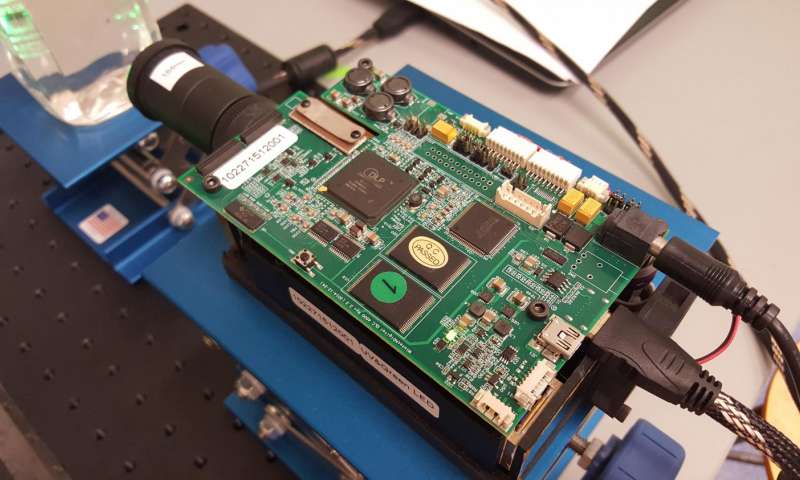Originally Posted: July 11, 2017
A scientist’s dream of 3-D projections like those he saw years ago in a Star Wars movie has led to new technology for making animated 3-D table-top objects by structuring light.
The new technology uses photoswitch molecules to bring to life 3-D light structures that are viewable from 360 degrees, says chemist Alexander Lippert, Southern Methodist University, Dallas, who led the research.
The economical method for shaping light into an infinite number of volumetric objects would be useful in a variety of fields, from biomedical imaging, education and engineering, to TV, movies, video games and more.
“Our idea was to use chemistry and special photoswitch molecules to make a 3-D display that delivers a 360-degree view,” Lippert said. “It’s not a hologram, it’s really three-dimensionally structured light.”
Key to the technology is a molecule that switches between non-fluorescent and fluorescent in reaction to the presence or absence of ultraviolet light.
The new technology is not a hologram, and differs from 3-D movies or 3-D computer design. Those are flat displays that use binocular disparity or linear perspective to make objects appear three-dimensional when in fact they only have height and width and lack a true volume profile.
“When you see a 3-D movie, for example, it’s tricking your brain to see 3-D by presenting two different images to each eye,” Lippert said. “Our display is not tricking your brain—we’ve used chemistry to structure light in three actual dimensions, so no tricks, just a real three-dimensional light structure. We call it a 3-D digital light photoactivatable dye display, or 3-D Light Pad for short, and it’s much more like what we see in real life.”
At the heart of the SMU 3-D Light Pad technology is a “photoswitch” molecule, which can switch from colorless to fluorescent when shined with a beam of ultraviolet light.
The researchers discovered a chemical innovation for tuning the photoswitch molecule’s rate of thermal fading—its on-off switch—by adding to it the chemical amine base triethylamine.
Now the sky is the limit for the new SMU 3-D Light Pad technology, given the many possible uses, said Lippert, an expert in fluorescence and chemiluminescence—using chemistry to explore the interaction between light and matter.
For example, conference calls could feel more like face-to-face meetings with volumetric 3-D images projected onto chairs. Construction and manufacturing projects could benefit from rendering them first in 3-D to observe and discuss real-time spatial information. For the military, uses could include tactical 3-D replications of battlefields on land, in the air, under water or even in space.
Volumetric 3-D could also benefit the medical field.
“With real 3-D results of an MRI, radiologists could more readily recognize abnormalities such as cancer,” Lippert said. “I think it would have a significant impact on human health because an actual 3-D image can deliver more information.”
Unlike 3-D printing, volumetric 3-D structured light is easily animated and altered to accommodate a change in design. Also, multiple people can simultaneously view various sides of volumetric display, conceivably making amusement parks, advertising, 3-D movies and 3-D games more lifelike, visually compelling and entertaining.
Lippert and his team report on the new technology and the discovery that made it possible in the article “A volumetric three-dimensional digital light photoactivatable dye display,” published in the journal Nature Communications.
Co-authors are Shreya K. Patel, lead author, and Jian Cao, both students in the SMU Department of Chemistry.
Genesis of an idea—cinematic inspiration
The idea to shape light into volumetric animated 3-D objects came from Lippert’s childhood fascination with the movie “Star Wars.” Specifically he was inspired when R2-D2 projects a hologram of Princess Leia. Lippert’s interest continued with the holodeck in “Star Trek: The Next Generation.” READ MORE
